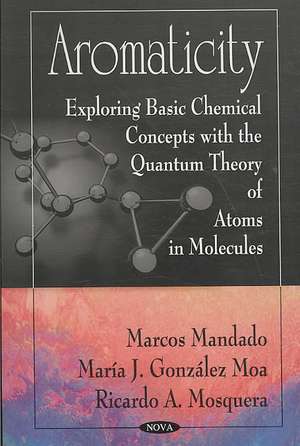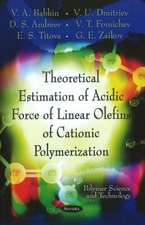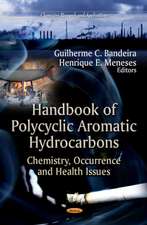Aromaticity
Autor Marcos Mandado, Maria J. Gonzalez Moa, Ricardo A. Mosqueraen Limba Engleză Paperback – 14 noi 2008
Preț: 290.02 lei
Preț vechi: 391.61 lei
-26% Nou
Puncte Express: 435
Preț estimativ în valută:
55.51€ • 60.32$ • 46.66£
55.51€ • 60.32$ • 46.66£
Carte disponibilă
Livrare economică 31 martie-14 aprilie
Preluare comenzi: 021 569.72.76
Specificații
ISBN-13: 9781604564082
ISBN-10: 1604564083
Pagini: 72
Ilustrații: b/w graphs/illus formulas
Dimensiuni: 154 x 228 x 7 mm
Greutate: 0.17 kg
Editura: Nova Science Publishers Inc
ISBN-10: 1604564083
Pagini: 72
Ilustrații: b/w graphs/illus formulas
Dimensiuni: 154 x 228 x 7 mm
Greutate: 0.17 kg
Editura: Nova Science Publishers Inc
Cuprins
Preface; Introduction; An Overview of Aromaticity and Aromaticity Indices; Electron Delocalisation and the Fermi Hole; Generalisation of the Electron Delocalisation and Localisation Indices to the Case of N-centres Using QTAIM Formulation; Tracking Aromaticity and Antiaromaticity Basec on N-Dis. The N-Dependence of the Index; Applications of the N-Dis to Whom It May Concern: The Study of Aromaticity; Total and Local Aromaticity in Small Aromatic Compounds. Comparison with Other Aromaticity Indices; Total and Local Aromaticity in Large PAHs. Comparison with the CGT; The Role of the Electron Delocalisation on the Stability of Aromatic Position Isomers; Applications of the n-DIs to the Study of Pericyclic Reactions; Multicentre Electron Delocalisation in All-Metal Compounds; Electron Delocalisation and Binding Energy in Bimetallic Clusters MAl4- (M=Li,Na,Cu) and MAl4 (M=Mg,Zn); Electron Delocalisation in Li3Al4- and Li4Al4; References; Index.









